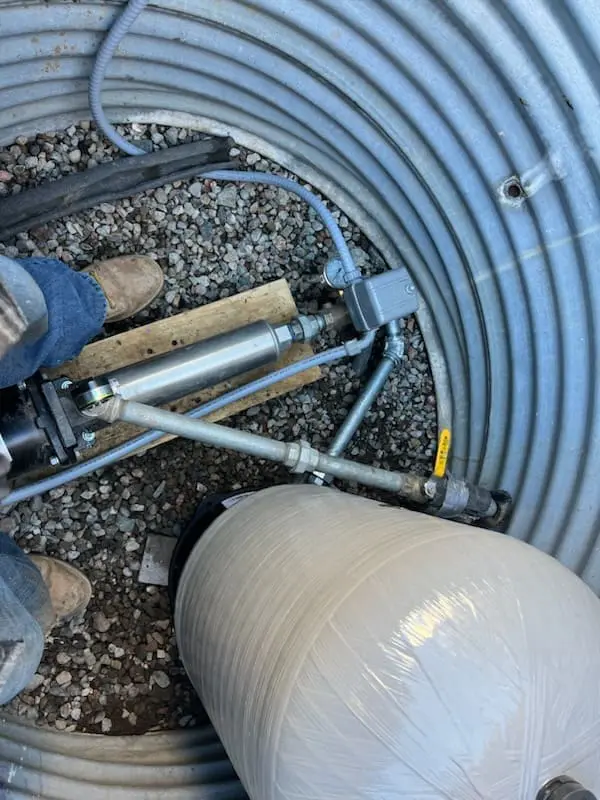Common Water Well Trouble Signs You Need to Know

One of the best methods to guarantee you have a consistent water supply to your home is through the installation of a private well. Installing a private well is the best option for the people who do not like the taste of chlorine in city water.
Problems with your water well may make your well unusable. If you refuse to address a well problem swiftly, you can pretty quickly find the issue snowballing into something far worse.
Problems with a water well can stem from a variety of source. Many borehole owners understand the need for regular maintenance and repairs, but sometimes overlook subtle signs of water borehole problems, leading to not consulting a borehole contractor in good time.
Here are some common indicators of water well issues:
Air in the Water Pipes
Does your faucet sputter and spittle inconsistent water flow every time you turn it on?
This issue is among the most common water well problems. Air get trapped in the high points of the water supply system, which causes it. To push the trapped air out, run every faucet and appliance in the house.
Run your appliances and faucets for 10 minutes. This will push water bubbles out of your water piping. If this does not work, however, you may also have a low water table or a faulty well pump drop pipe.
The last two are serious well problems, and getting them replaced needs immediate attention by a specialist that has gone through training on well pump replacements in Petaluma.
Inadequate Water Pressure
Everything from a stuck check valve or faulty gate to a leaking pressure tank can all lead to water well problems that cause low water pressure.
Another cause of a clog can happen when iron bacteria build-up on either the pump or well screen. The Iron bacteria will accumulate in the pipe nipple where it goes to the pressure switch thus will affect the value of its sensitivity and will not be able to measure the pressure exactly. Clean your well with a solution that removes slime, scale and iron bacteria to reduce your build-up.
In some cases, water pressure problems can be solved by simply changing the pressure switch to increase the pressure level. This is only possible when the well pump and well are rated to work at the higher pressure without trouble. Call a water well specialist before it turns bad to worse.
The Well is Pumping Sand
Your well is pumping sand because there can be two reasons. Your well screen has either deteriorated and is letting sand or silt enter the pump, or the water level has dropped and your pump is sucking in sand and sediment (a frequent problem with pumps located near the bottom).
An automatic purge valve attached to a 60-mesh filter screen or a professionally installed sand and sediment trapper will often solve the problem.
Well Pump and Pressure Switch Short Cycling
Common causes of well pump short cycling include water pump control switch problems, loss of air charge, water leaks, a bad check valve, or blocked water supply piping. These issues can make your well pump run 24 hours a day.
Short cycling often occurs when the pressure tank has lost its captive air pressure in many instances in short cycling. To see if this is the issue, shut off your pump power. Keep the water running until all water pressure has drained. Inspect the Schrader valve with a tire pressure gauge.
The cut-out pressure should be two PSI less than or equal to cut-in pressure. If your well, for instance, kicks on at 30 PSI, then the pressure should be 28 PSI.
Sky-high Electricity Bills
So, sky-high electricity bills could hint at a worn-out/clogged pump.
With time, pumps fill with sand or are infected with bacteria. A blocked pump needs to work more than usual. It uses more power, and suddenly for reasons you can’t explain your electricity bills are surging.
If your pump is working properly, your check valve might be bad, allowing water from the pressure tank to flow back into the well. The pressure switch, when sensing pressure loss, tells the pump to come back on. This on and off cycle every few minutes essentially means that your pump is running continuously (almost) 24 hours a day.
A Change in Water Quality
An abrupt and inexplicable alteration in the quality of your water can be a sign of an issue with your casing, well shaft, drop pipe or pump. If you see tons of sand or sediment in your water or smell any odor at all, there is a high chance that surface water has entered or seeped into your well.
Whatever the issue, have your water tested. If you experience a sudden decrease in water quality or water pressure, contact your well water professional or a licensed pump contractor immediately.
Well Maintenance Tips
Keep paints, fertilizers, pesticides, motor oil and other toxic-chemical products away from your well
Use certified or licensed water well contractors for maintenance
Inspect the well cover or well cap atop the casing periodically. Broken water well pipe casings must be replaced immediately
Prevent back-siphonage. Here’s what you can do:
- Install a concrete mixing and loading pad to prevent unintentional pesticide spills near your well. The pad should be used to mix and load pesticides
- Do not stack leaves or debris near your well
- When mowing around your well, take care not to damage the casing.
- Keep your maintenance and installation well records in a secure location
Specializing in water well drilling, Boylan Water Well Service and Supply is proud to be a top rated drilling contractor in Santa Fe, NM.
We know all there is to know about wells and pumps. We think doing things the right way the first time. For a consultation to talk to our team about your project, call 505-501-4848.